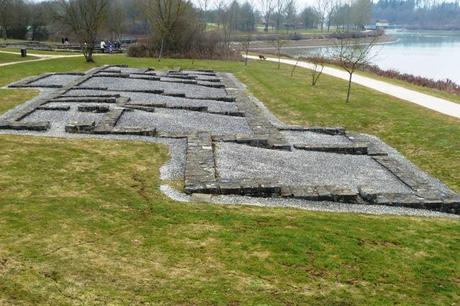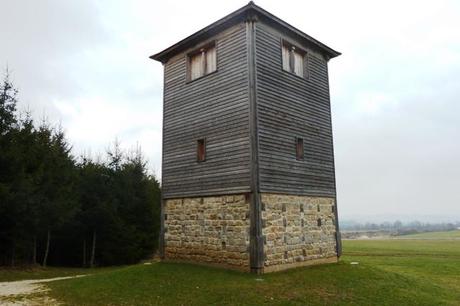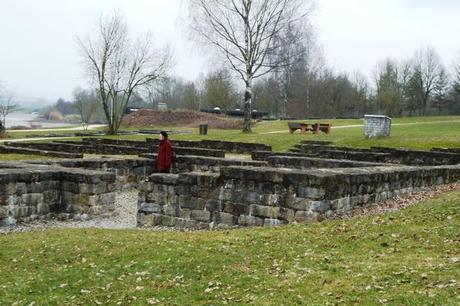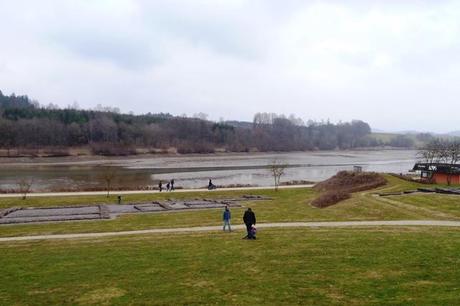
If you’re interested in discovering the Roman Limes in Germany, (the border of the Roman Empire), and also a UNESCO World Heritage Site, you have a lot of options since the Roman Limes cover 550 km and encompasses 70 towns and villages. Despite its fascinating history, the Roman Limes are often overlooked by visitors to Germany. I have to confess that the Roman Limes certainly weren’t on my radar before moving to Germany, and even then only because I saw a UNESCO World Heritage Site while driving. Having now been to several Roman Limes sights, and unraveled a little bit more about life in Roman times, I would recommend a stop or two at one of the many Roman Limes locations.
One of my favorite places to explore the Roman Limes is in Aalen, ~75km east of Stuttgart in southern Germany because it is home to several Roman Limes archeological sites and points of interest, giving you a good overview of life in Roman times.

Artist's depiction of the Roman Fort at Aalen
Aalen is home to one of the largest Roman forts north of the Alps where you can still see part of the ruins dating back to 160 AD to 260/270 AD. The higher your rank, the more central your location in the fort, and the more protected you were. Aalen is also home to the Roman Limes Museum, the largest Roman museum in southern Germany and one of the largest in Germany. I found the museum to be very comprehensive, but the English audio tour was a bit on the dry side (all the signs are in German only), although I did enjoy dressing up as a Roman soldier where I found out how heavy all that armor really is – I could hardly move. They do hold special “Roman Days” throughout the summer which sound fun for kids so it might be worth checking the schedule in advance.

Reconstructed Roman watch tower. Watch towers can be found every 200 -1000km along the 550km Roman Limes in Germany.
Just a short drive east of Aalen you can find one of the reconstructed Roman towers found all along the 550km Roman Limes in Germany. The Roman watch towers were placed every 200 – 1000m and were used to control the frontier. Each tower had visual contact with the towers beside it and could pass a message on to the next tower and so on. Messages were often passed on with either a horn or a fire signal. It sort of reminds me of the telephone game. Up to four soldiers lived in each tour and those based in remote towers were given a rather bland diet to exist on for months at a time.

The ruins from Roman baths dating back to 150/160 AD
Also only a few minutes east of Aalen are the Roman Baths. This was my favorite Roman Limes site since the archeological site is well signed (with English signs as well) and sits on a river. The Roman Baths now reside beside a recreational area, complete with it’s own beach. Paddle boats can be rented and there’s even a mud area for children. It was too cold for swimming when we were there in March, but I think it would be worth going back just to see the mud area in use. Plus running along the ruins make for a great game of tag, as I witnessed several children playing. I think the Roman Bath sitet is an exceptional way of blending the past with the present.

There are also many walking paths along the river near the Roman Baths.
Would I stop at every Roman Limes location in Germany? Not likely since there’s just too many, but I do plan to visit at least a few more sites and would like to cycle the entire historic 550 km border for which there is a well marked bike route. For visitors to Germany I think choosing a few sites are definitely worth a visit – especially if it happens to be beside a mud bath!
It is not easy to find information on the Roman Limes in English in Germany, but I’ve found the German Limes Road Association to be the best source of information and very comprehensive. Unfortunately many pages are only available in German.

